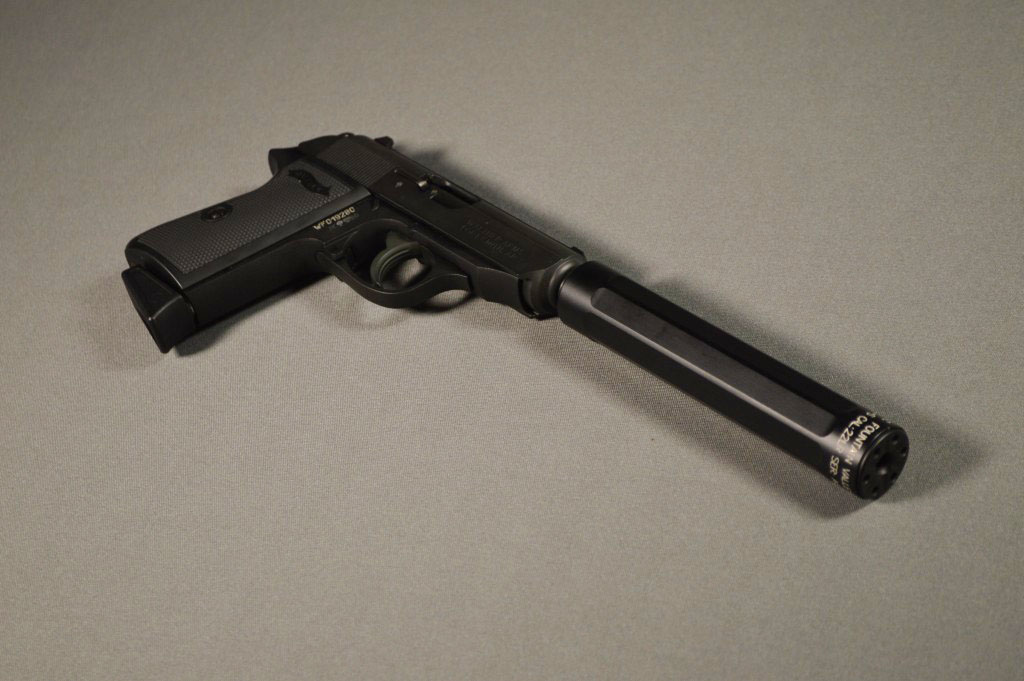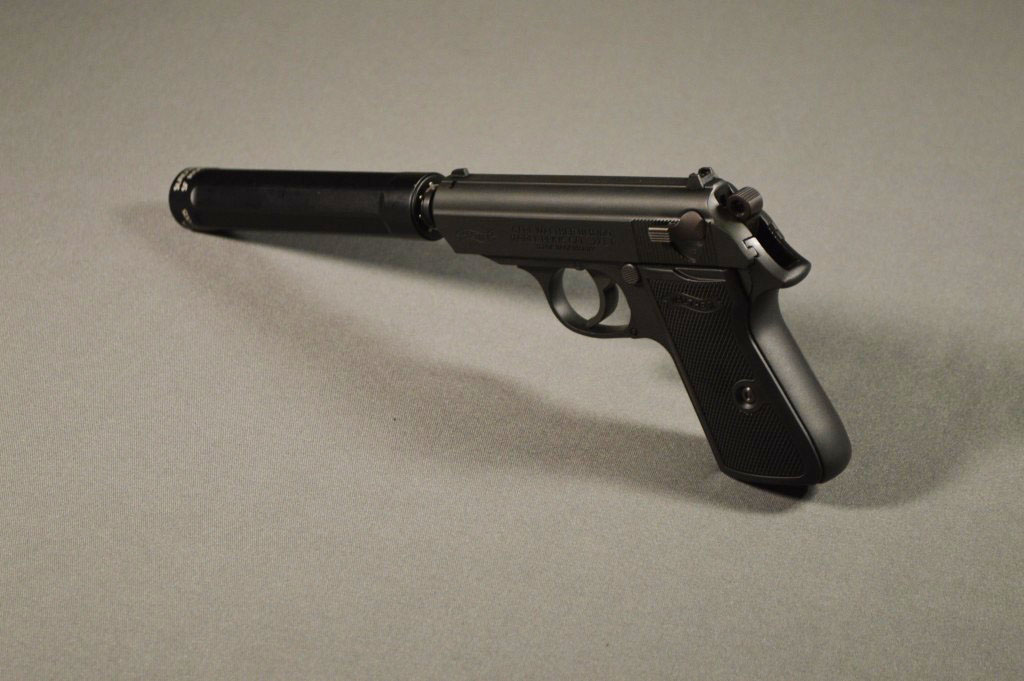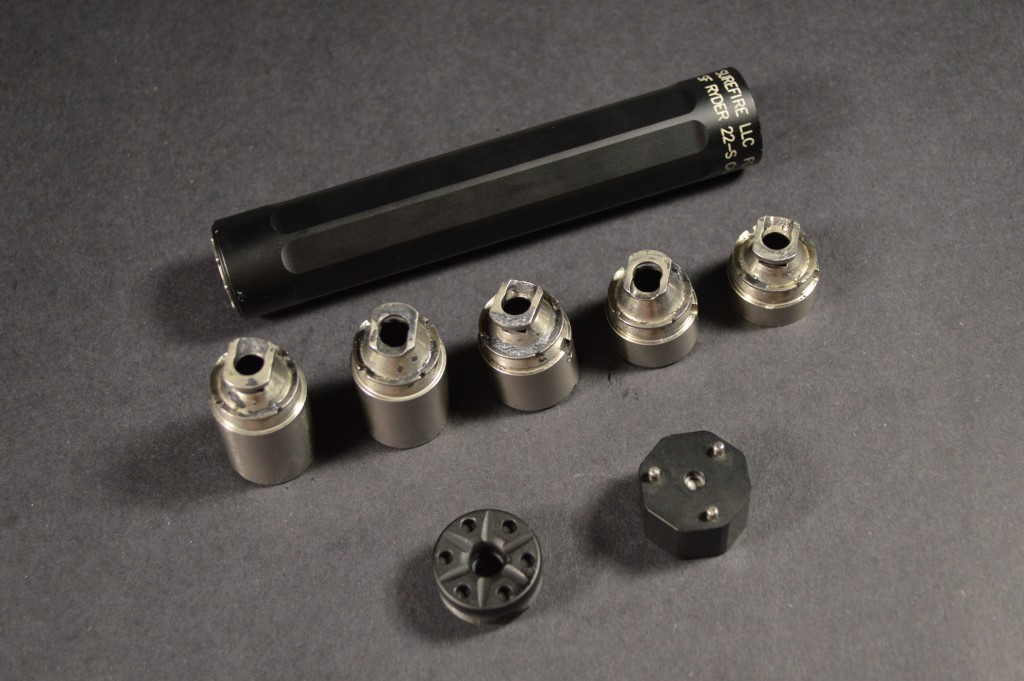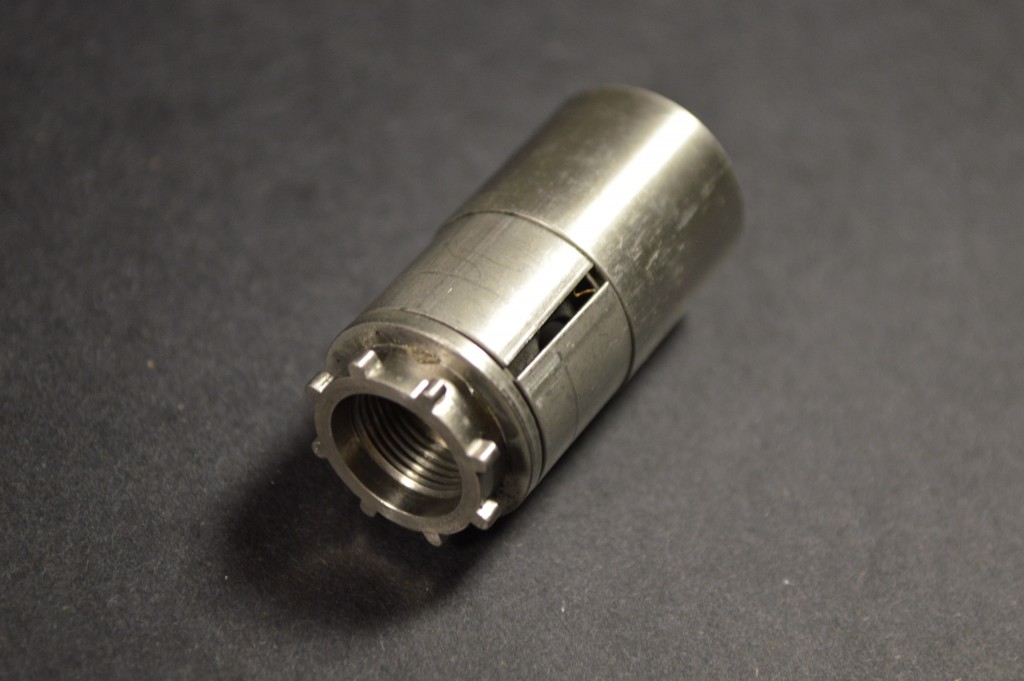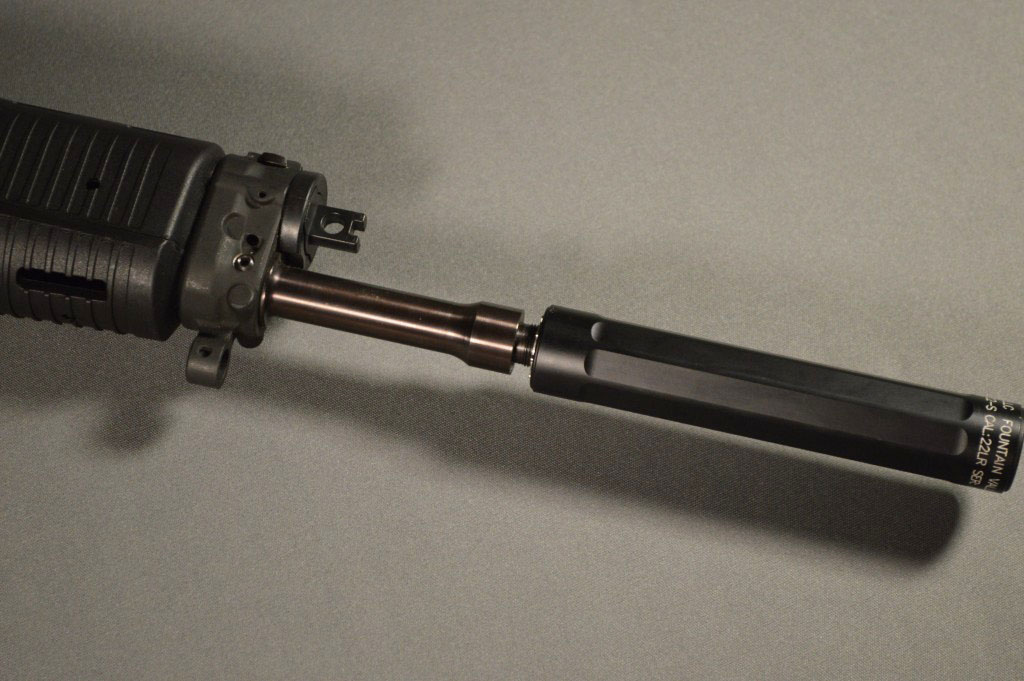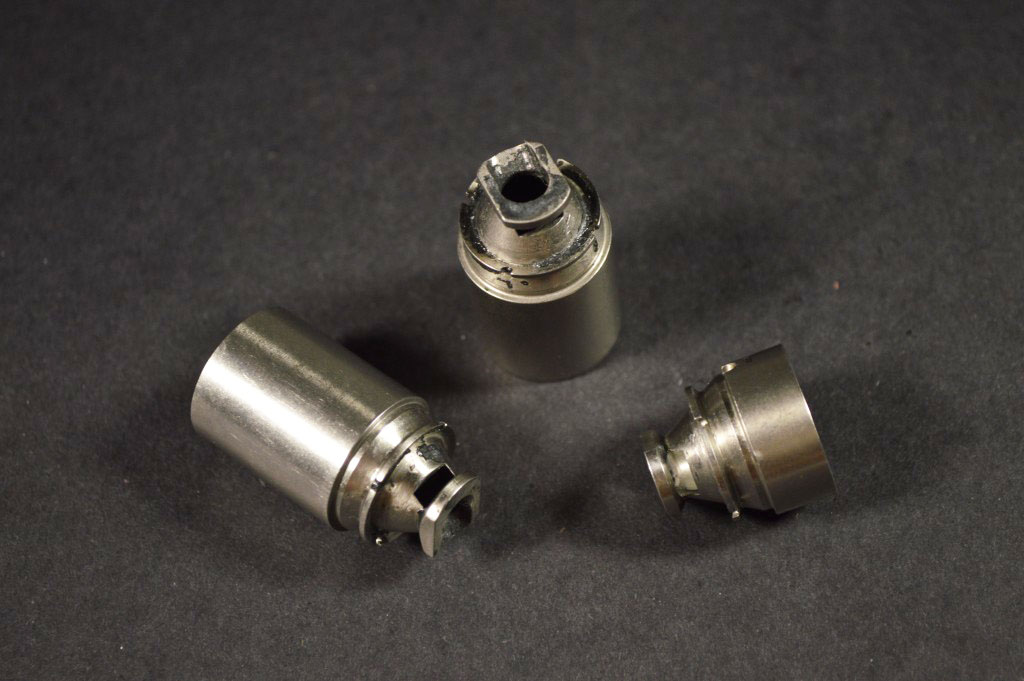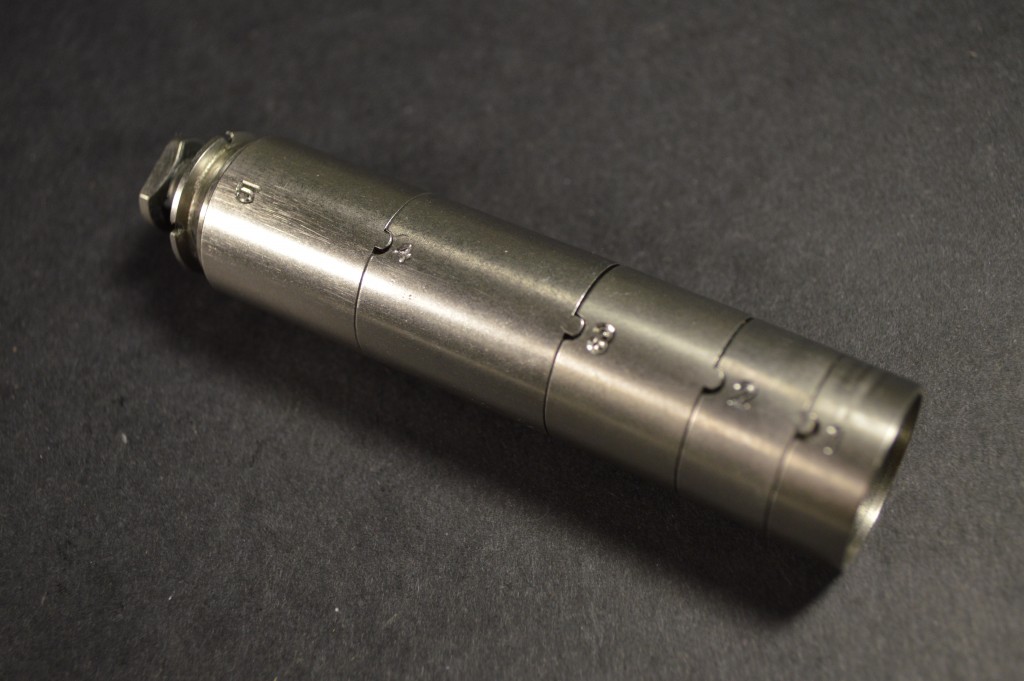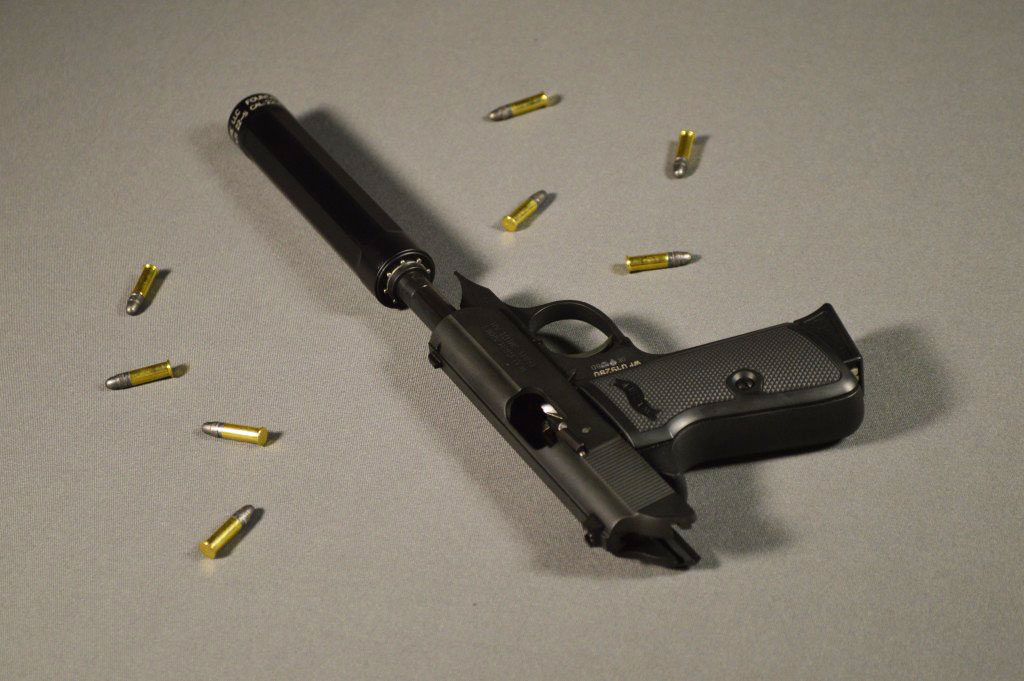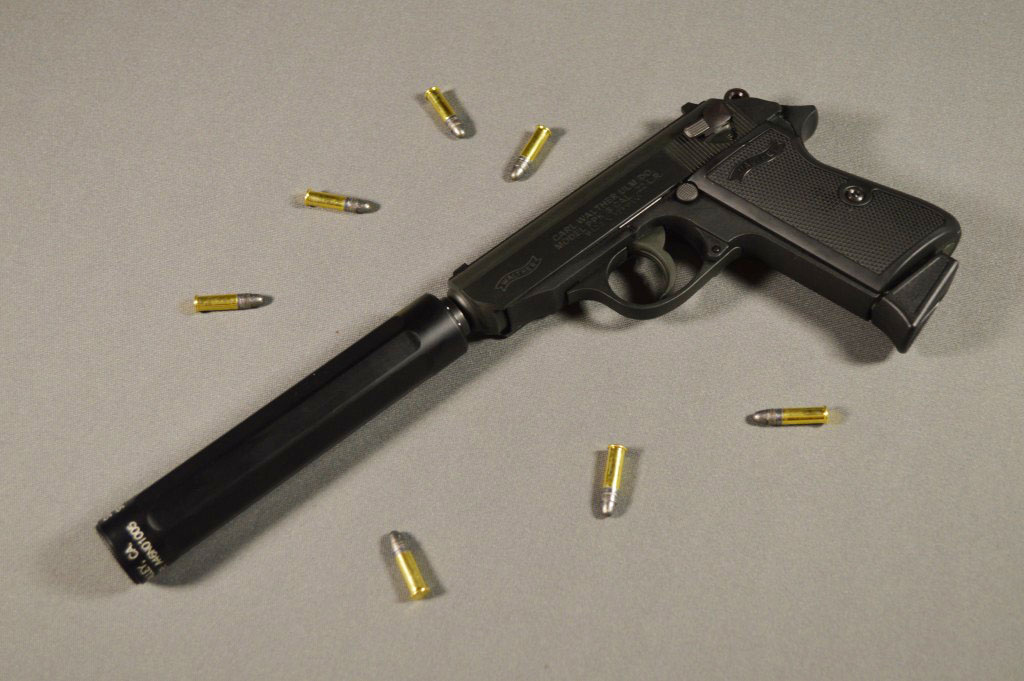Silencer Shop Authority: Surefire Ryder 22-S Review
Almost universally recognized as the best value in the NFA world, rimfire silencers are exceptionally fun to shoot with, and I’ve been working closely with Silencer Shop to bring as many of these cans to readers as possible. This week, the trend continues with Surefire’s Ryder 22-S.
To fully understand why the Ryder is an intriguing suppressor, it is important to recognize that until last year (2014), Surefire’s silencer lineup exclusively consisted of rifle caliber, centerfire cans. Though the company did create some buzz by featuring an early version of the Ryder at SHOT Show 2012, it really was not until SHOT 2014 that Surefire finally jumped into the rimfire world with the Ryder 22-S (stainless baffles) and Ryder 22-A (aluminum baffles) silencers. Since the introduction of the Ryder series marked Surefire’s first real attempt at a civilian-centric line of suppressors, I’ve been interested to see how the cans fare against stiff .22 caliber competition.
Size and Weight
In previous reviews, I’ve been mostly ambivalent about the overall size of most rimfire suppressors. Generally, all cans in this category are small, and the practical difference between a 5” and a 6” silencer (for example) just did not seem all that significant. The 5 3/8” Ryder 22-S has substantially changed my feelings on this matter.
Unlike longer competitors, the Ryder seems like the perfect .22 pistol silencer. It is compact enough that my host PPK/S did not feel much longer than normal, and like most rimfire cans, the 22-S is 1” in diameter and does not interfere with most standard pistol sights. Beyond obvious maneuverability advantages, the suppressor’s relatively short length helps to keep a pistol’s center of gravity within a more natural range.
Far from overweight, the Ryder 22-S rolls in at 5.2 ounces. This puts Surefire’s stainless-baffled version of the Ryder at 2 ounces heavier than the aluminum-baffled 22-A. The 22-S may not be a featherweight like the Gemtech GM-22 or Surfire’s own Ryder 22-A, but its heft is certainly reasonable for a silencer with fully stainless guts.
Materials and Design
Inside the Ryder 22-S’s hard anodized aluminum tube is a baffle stack constructed entirely of stainless steel. The stainless baffles offer increased cleaning flexibility over the 22-A’s aluminum stack and they facilitate use with speedy rounds like the .17 Mach2. Aside from the baffles, the removable thread insert and blast chamber spacer are also stainless.
Speaking of the thread insert, the Ryder 22-S is threaded in the industry-standard 1/2×28 pitch. Unlike other .22 cans I’ve examined, the Ryder’s threads are short enough to require a spacer on longer .22 rifle barrel threads. Fortunately, Surefire includes this necessary accessory with the silencer.
The baffles themselves use a fascinating design that Surefire calls “pig-nosed.” Essentially, they take the flat, ported blast surface of a K-baffle, and trim it down so gasses can expand around it. Behind the blast face is a conical skirt, much like any standard cone baffle, but with a small flat ring around its midsection. The result is a sort of hybrid K-cone shape that takes some advantages from each design.
The five stainless baffles are easily removed from the suppressor tube through the front of the silencer. The included take-down tool can be used to unscrew the front cap, and since the baffle skirts shield the outer tube from lead and carbon, the stack slides right out. You’ll notice that the baffles pack closer and closer together as they approach the end of the silencer. To help with orientation, each baffle is numbered according to its position in the stack, and small tabs on the baffle skirts help to keep the pieces aligned during reassembly.
Range Report
I mentioned at the beginning of the review that I really like the overall size of the Ryder. In terms of both overall length and weight, the can seems to be just about perfect and is at home on either a pistol or a rifle. At the range, the Ryder is just heavy enough to be noticeable on a handgun, but when mounted on a rifle is unlikely to be banged around while shooting on the move.
I must say that the Surefire Ryder 22-S did seem ever so slightly louder than the AAC and Bowers suppressors I sampled beside it. According to test numbers from Silencer Shop, the 22-S hovers in the 112 dB ballpark one meter from the muzzle when used with subsonic ammunition. This is actually excellent performance for any .22 silencer, but it is especially impressive from a rather compact option like the Ryder. Unfortunately, the sharper tone of the can makes it seem somewhat louder to the shooter than some competing designs. If I had to guess, the generally conical baffle style of the Ryder allows more gas to flow back toward the shooter than other types.
Like most suppressors, first-round pop and point of impact shift are both factors that must be considered when discussing the Surefire Ryder 22-S. My experience with the silencer revealed that first-round pop is mostly only noticeable when used with a pistol, and even then, it is pretty minimal. In such a case, I would estimate that the first round through a cold Ryder to be about 3 dB louder than follow-up shots, which is just barely enough to be noticeable. If you’ve used several .22 suppressors, I would say that the Ryder’s first-round report falls somewhere between a traditional K-baffled design and a quality monocore, leaning more towards the former. In the video below, you will notice that the Aguila standard velocity ammunition I used with the Ryder tended to go supersonic when fired out of the longer SIG 522 barrel. Do not let this skew your impression of the suppressor’s performance.
As I would expect from most high-performance .22 silencers, the point of impact shift with the 22-S is negligible. At 25 yards and mounted on my SIG522, the Surefire silencer seemed to impart around 1/4” of leftward drift as compared to unsuppressed groupings. That said, I do not consider my results all that valid. Since the ammunition struggled to stay consistently supersonic or subsonic, comparisons between the two groupings are imperfect at best.
Conclusion
Even in the crowded .22 caliber suppression market, Surefire has developed a strong option with the Ryder 22-S. I love that the baffles shield the tube from build-up, making disassembly and cleaning incredibly easy with this suppressor. The Ryder’s size is also ideal for practically every application. Mounted on my PPK/S, I felt as though the two went together perfectly. My only real complaint with the 22-S was that its tone simply is not quite as pleasing as some other options. As a result, the silencer sounds a bit louder than it probably is.
At a little under $400 from Silencer Shop, the 22-S is by no means cheap, but it also is not unreasonably expensive. Compared to other silencers in the price range, Surefire’s offering holds its own in terms of both features and performance. Shooters looking for a compact and durable suppressor that posts suppression numbers on par with larger silencers are unlikely to be disappointed with the Ryder 22-S.
An information security professional by day and gun blogger by night, Nathan started his firearms journey at 16 years old as a collector of C&R rifles. These days, you’re likely to find him shooting something a bit more modern – and usually equipped with a suppressor – but his passion for firearms with military heritage has never waned. Over the last five years, Nathan has written about a variety of firearms topics, including Second Amendment politics and gun and gear reviews. When he isn’t shooting or writing, Nathan nerds out over computers, 3D printing, and Star Wars.

